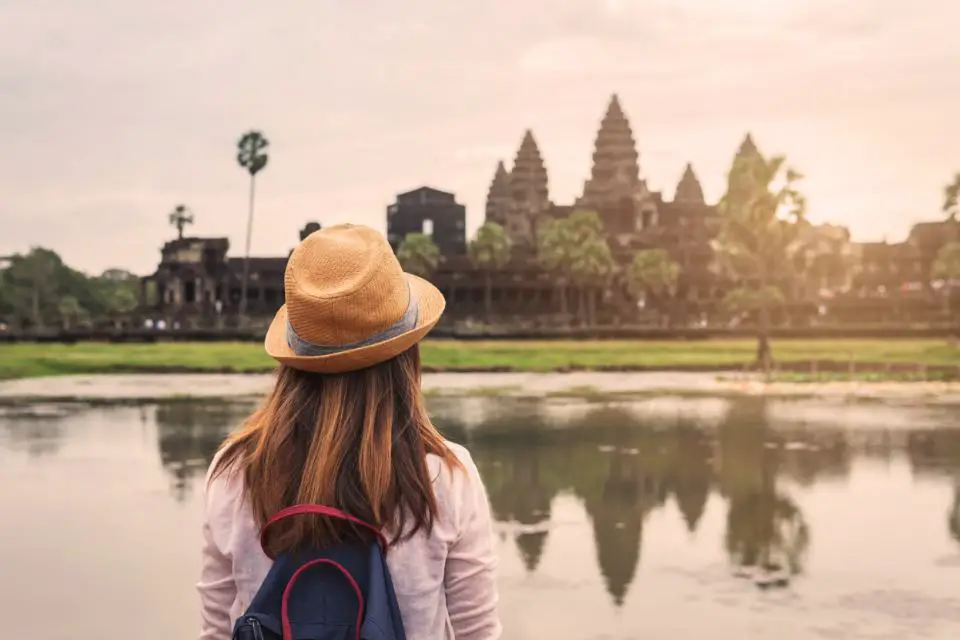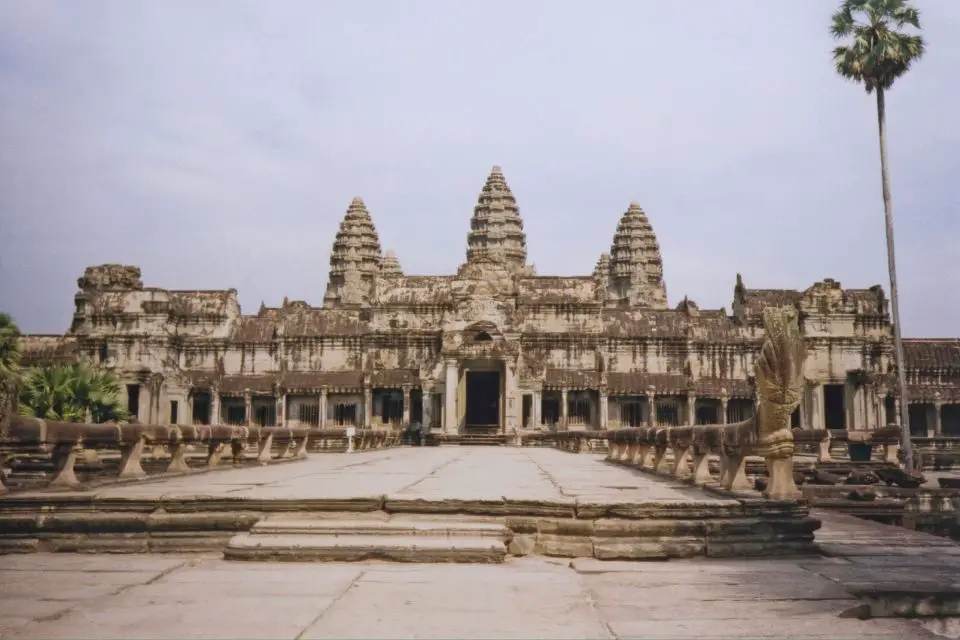Step into a world of ancient wonder at Angkor Wat, a breathtaking temple complex that transcends time.

Angkor Wat, a UNESCO World Heritage Site, stands as a testament to the grandeur of the Khmer Empire. Its historical and cultural significance makes it one of the most important archaeological sites in Southeast Asia. This article will guide you through the marvels of Angkor Wat, exploring its history, architecture, and how to best experience this awe-inspiring site.
History of Angkor Wat
Origins: Angkor Wat was built in the early 12th century by King Suryavarman II of the Khmer Empire. It originally served as a Hindu temple dedicated to Lord Vishnu. The temple’s construction marked the height of the Khmer Empire’s power and influence in Southeast Asia.

Construction: The construction of Angkor Wat is a remarkable feat of engineering and architecture, involving thousands of workers and taking several decades to complete. The temple is made of sandstone blocks, intricately carved with detailed bas-reliefs. The precision and skill required to create such a monumental structure are truly awe-inspiring.
Religious Significance: Initially a Hindu temple, Angkor Wat later transformed into a Buddhist site. It remains a symbol of Cambodia’s spiritual heritage and is still used for religious purposes today. The temple’s transition from Hinduism to Buddhism reflects the cultural and religious shifts that have occurred in the region over the centuries.
Architectural Wonders
Main Features:
- Five Towers: Symbolizing Mount Meru, the mythical center of the universe in Hindu and Buddhist cosmology, the five towers of Angkor Wat are an iconic feature of the temple.
- Bas-Reliefs: Intricate carvings depicting scenes from Hindu mythology, including the famous Churning of the Ocean of Milk, adorn the walls of the temple. These bas-reliefs are not only artistically stunning but also provide valuable insights into the beliefs and stories of the time.
- Moat and Causeway: Surrounding the temple, the moat and causeway add to its grandeur and provide a defensive barrier. The reflection of the temple in the water creates a mesmerizing sight, especially during sunrise and sunset.
- Central Courtyard and Galleries: Featuring stunning architecture and detailed carvings, the central courtyard and surrounding galleries are a testament to the skill and creativity of the Khmer builders.
Architectural Styles: Angkor Wat’s unique style has influenced many other temples in the region. Its combination of Khmer architecture with elements of Hindu and Buddhist design makes it a masterpiece of ancient art. The temple’s layout, symmetry, and intricate details continue to inspire architects and historians alike.
Visiting Angkor Wat
Best Time to Visit: The best time to visit Angkor Wat is during the dry season, from November to March, when the weather is cooler and more pleasant. This period also sees fewer rain showers, making it ideal for exploring the temple complex.
Getting There: Angkor Wat is located near Siem Reap, Cambodia. Visitors can reach Siem Reap by air, bus, or boat, and then take a short tuk-tuk or taxi ride to the temple complex. Siem Reap is well-connected to major cities in Southeast Asia, making it a convenient destination for travelers.
What to See and Do:
- Key Areas: Explore the central temple, the outer galleries, and the surrounding structures. Each area offers unique architectural features and historical significance.
- Activities: Enjoy sunrise and sunset views, take photographs, and visit nearby temples such as Angkor Thom and Ta Prohm. The early morning and late afternoon light create magical moments for photography.
- Local Guide: Hiring a local guide can enhance your experience by providing in-depth knowledge and historical context. Guides can share fascinating stories and insights that bring the temple’s history to life.
Tips for Visitors:
- Appropriate Attire: Wear modest clothing that covers your shoulders and knees. This is important to show respect for the religious and cultural significance of the site.
- Respect Local Customs: Be mindful of religious practices and local traditions. Avoid touching carvings and statues, and follow any guidelines provided by the temple authorities.
- Stay Hydrated: Carry water and stay hydrated, especially during hot weather. The temple complex is vast, and staying hydrated is essential for a comfortable visit.
- Sun Protection: Use sunscreen, wear a hat, and bring sunglasses to protect yourself from the sun. The Cambodian sun can be intense, so taking precautions is important.
Conclusion
Angkor Wat is a historical, cultural, and architectural masterpiece that continues to inspire awe and admiration. Its enduring beauty and significance make it a must-visit destination for travelers from around the world.
Visit Angkor Wat to experience its wonders firsthand and immerse yourself in the rich history and culture of Cambodia. Whether you’re a history enthusiast, an architecture lover, or simply a curious traveler, Angkor Wat offers something for everyone.
Angkor Wat stands as a timeless symbol of human ingenuity and spiritual devotion, reminding us of the enduring power of ancient civilizations. Its majestic presence and intricate details invite us to reflect on the achievements of the past and the beauty that can be created through dedication and creativity.
